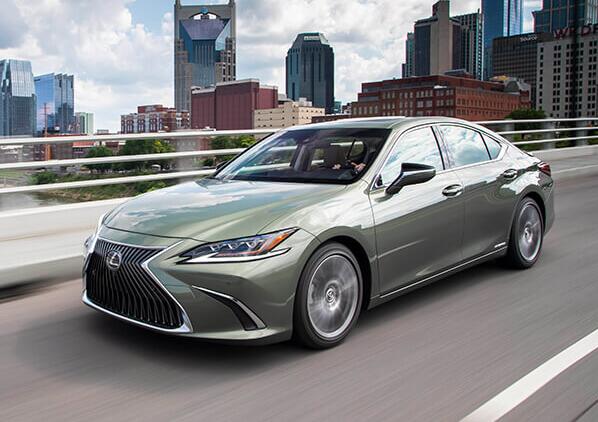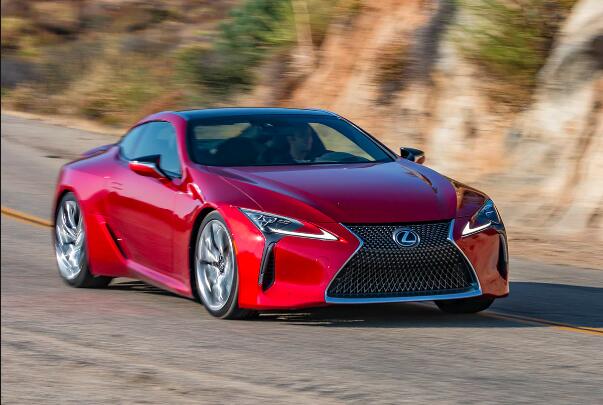The 30-year-old Japanese Company: The Past and Present of Lexus
Lexus turns 30, which is why he has called us to know not only his range of current models but also those who started everything.
In these little more than three years that I have been dedicating myself to this profession. I have been able to reaffirm again how much I am passionate about the automobile world. However, not everything is pink, and I think I speak on behalf of all my coworkers. The express trips that involve the presentations can be harmful. But on this occasion, I have to confess that it was with an illusion. Not every car is capable of waking up and that it refused the bland feeling. Other situations completely alien to the motor world can generate as a long and tedious wait in the terminal of an airport, for example.
The reason for my trip to Tarragona has been that the Japanese luxury firm, Lexus, was thirty years old, the time in which he has achieved different feats. But before going into the matter, I must force a time travel and go back to 1983, decided to convene a clandestine meeting. It proposes a very ambitious project, but that posed a great risk to investors.

A risky adventure
Behind the walls of that office in Japan in the 1980s, Eiji Toyoda wanted to end the hegemony of the great European titans. At that time, Toyota offered exclusively in its home country, a series of luxury vehicles. But a clear lack of exclusivity aroused in the future founder of Lexus. The need to go further despite the years of advantage that carried undoubtedly successful brands such as Mercedes-Benz or BMW.
After six hard years of exercises, market research and approach to numerous strategies, the firstborn of Lexus, the LS 400, was born. During this gestation period, the Japanese house developed a total of 1,000 engine prototypes under the orders of Ichiro Suzuki, a stoic chief engineer on whom the diligent task of demonstrating to the world the supremacy of the newly arrived luxury firm.
With the LS 400, Lexus managed to show the first tips of the so-called Yet philosophy. Vehicle characteristics that in the first instance would seem incompatible by their very nature. In other words: it was about mixing sportsmanship with comfort or luxury with simplicity. And the saloon of representation of Lexus was a wonder of these pairings.
At the controls of the most emblematic Lexus
As I said at the beginning of the article, this presentation has aroused in me a special illusion. And it is that the context was not for less since the Japanese firm allowed us to conduct a bit of history. The LS 400 monopolized all my attention from the moment at the event. Something normal considering that I declare myself an inveterate fan of every car that has played in both the 80s and 90s.
In the eyes of the current public, the LS 400 is simply an old car, and those of the Government polluting trash that must be eradicated. But in my view, I think it is a treasure worth keeping. In its entrails lies a 4.0-litre atmospheric V8 capable of producing 253 hp and 353 Nm of torque, figures that are managed from a four-ratio automatic transmission. It is once accommodated in their enveloping seats, more typical of the first class of a luxury airline than of a saloon. I begin to familiarize myself with all the controls that are predisposed to take me directly until 1989.
The first thing that surprises me is the generous technological arsenal presented by the flagship Lexus. The LS 400 clothes us with a series of components that not long ago arrived at the contemporary vehicle. The central console, covered with wood, receives us with the gearbox selector and with three dials that allow us to manage the suspension setting, engine response and traction control.
The comfortable seats surprise me with the electrical regulation, while the door panels, lined in premium leather. It receives me with the buttons for the memory of them and a final command in which the safety belt drew on him. I, poisoned both by the curiosity of the moment and by the freedom that Lexus gave us to test the range of vehicles present, I press the button to discover its function. Suddenly I feel the height of the belt descends with parsimony and subtlety.
And we must not forget that the LS 400 was developed to rival directly for Mercedes S-Class and BMW 7 Series of the time, and Lexus managed to check both models. But it was time to put the key in the cylinder, start and enjoy that eight “V” cylinders that had remained at rest throughout the dawn. The odometer reflects just over 90,000 kilometres travelled, a figure that generates in my grief and joy at the same time.
After waking up to the engine after its morning lethargy, I can feel a thunderous softness that makes me check on more than one occasion if the LS is really on. Rolling the situation does not change, and the Japanese luxury saloon shows me why he was a worthy rival of his main European competitors.
The V8 is soft and quiet, two characteristics that seek to affirm the clear role of the LS 400. However, I cannot help sinking my right foot when a straight temptress comes before me. The bravery of the eight cylinders comes out and hits me to the seat with much more anger than I imagined a priori. The four-speed box manages the changes with a fluidity that I did not expect, and I begin to realize that I am about to overcome the legal speed of the road.
After a brief but intense route, I return to the starting point with an unconditional desire to start looking at the main second-hand portals of the first-generation Lexus LS. “Damn it,” I think to myself as I search Milanuncios for how much Lexus sports is currently quoted.

The Lexus SC 430
After stopping fantasizing about an idyllic garage full of old Japanese glories, I sit at the controls of the SC. The first thing that surprises me is the quality of all materials, which far exceeds that of any contemporary vehicle of similar price and segment. Wood and leather are responsible for covering even the most remote area of the cabin.
A V8 of 4.3 litres is also responsible for giving life to the SC with a negligible 286 hp and 419 Nm of torque. These figures allow the Japanese sports car to reach 100 km / h in 6.2 seconds and a maximum speed of 250 km / h. But I anticipate that the smooth and refined roll of the SC 430 will cause us to forget about its benefits quickly and that we only worry about enjoying the trip peacefully.
Taking advantage of the sunny morning that covered Tarragona, I decide to press the button on the top and make the route that marked the GPS in the open sky. The shy but trickster bellow of the V8 greets me, and I quickly foresee a soft and affectionate character on the part of the engine. Not for nothing and as with the LS, the SC is still a vehicle of almost 300 hp, and I assure you that these are noticeable if we look for them.
His address is not very heavy or very communicative, and his suspension suggests a rather soft tare. But Lexus conceived the SC 430 precisely to travel from A to B with unprecedented comfort and quickly. The rear seats are testimonials, and the hood needs time to hide, but we have to keep in mind that we are talking about a car that, at best, is thirteen years old.
Its production was carried out between 2000 and 2006, a period in which the SC rivalled models such as the Mercedes-Benz SL. However, Lexus sports car carries behind it, and the materials used to confer to the interior. And the quality of rolling away dramatically from many current sports cars that seek to offer a similar concept.
The Lexus IS 200
The fun at the controls of the luxurious convertible is over, and I am again without an adventure partner. I return to the starting point and carefully look at the plank, cars were homeless in the parking lot and had gone for a walk were noted. Suddenly, I look at some keys that move away considerably from those modern controls capable of opening the car just by reaching into the shooter.
«IS 200», I read on the sign that is just above and the memories of when I played Need For Speed during my adolescence quickly emerge in my mind. Without delaying my decision much longer, I ask for the saloon keys, and I get ready to enjoy the last event test. I sit inside the IS, and I notice the presence of a six-speed manual gearbox, a detail that encourages me, even more, to go around.
Its six cylinders inline sound a few seconds slightly after the starter is operated employing the key. First gear and I move away with parsimony from the facilities to enjoy the Japanese saloon. The response of 155 hp and 195 Nm of torque is very linear, and it invites me to play with the rather high area of the tachometer, at which point the IS 200 feels very comfortable.
The touch of the gearbox is delicious; The chassis has a simply superb set-up, and I miss a somewhat sportier suspension adjustment.

Conclusion
The history of Lexus is not as long as other brands, and they have been on the market since time immemorial. But I must praise the work that the Japanese firm has managed to do in these last thirty years. It was in 2004 when the first hybrid mechanics arrived at the market by the hand of the RX. In 2010, the magistral LFA made an appearance, a supercar that we could admire at the event but, unfortunately, we did not drive. With honey on the lips. And today the brand is surrounded by a cast of efficient vehicles and capable of continuing to emanate luxury and exclusivity.
These have a worldwide recognized reputation, something possible thanks to the good feats that their ancestors achieved. On the other hand and thanks to its philosophy, Lexus has managed to transmit the same spirit generation after generation but adapting it to the current times and new technologies in the headlight technology.
In this way, the luxury firm is still willing to offer a tough war to brands such as Audi, Mercedes-Benz or BMW, which reigned peacefully until the 1990s. Today, Lexus begins to dominate part of the market thanks at a good value for money and a range of options capable of satisfying all types of customers. But the fight continues, and we will continue to witness the progress of the brand.
